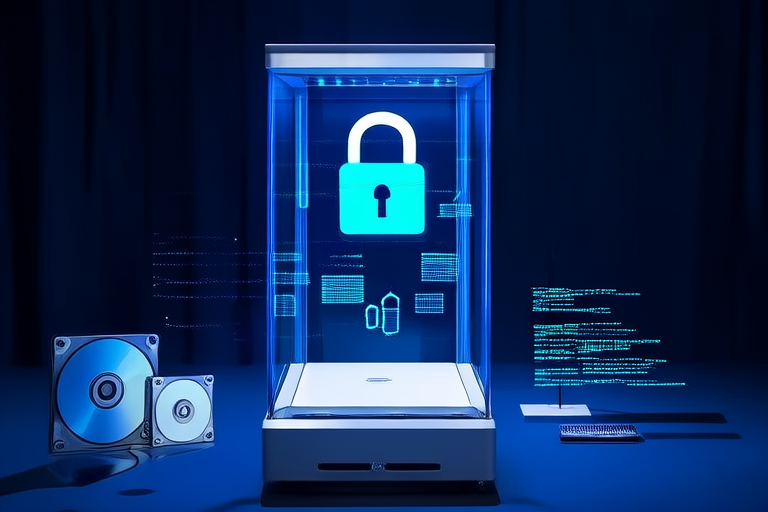The Ultimate Guide to Protecting Your Data in 2024
In today’s digital age, protecting your personal and professional data is more critical than ever. Cyber threats are evolving rapidly, and staying ahead requires a proactive approach. This guide provides actionable advice on safeguarding your data, covering everything from understanding modern cyber threats to implementing advanced security measures. Whether you’re a tech-savvy individual or a beginner, these strategies will help you secure your information effectively.
Understanding Modern Cyber Threats
Cyber threats come in many forms, ranging from malware and ransomware to phishing attacks and identity theft. Hackers are constantly refining their techniques, making it essential to stay informed about the latest risks. Malware can infiltrate your devices through malicious downloads or infected websites, while ransomware encrypts your files and demands payment for their release. Phishing attacks often disguise themselves as legitimate emails or messages, tricking users into revealing sensitive information like passwords or credit card details.
To combat these threats, it’s crucial to remain vigilant. Regularly educate yourself on emerging trends in cybersecurity, and always question the legitimacy of unexpected communications. Awareness is your first line of defense against cybercriminals.
Implementing Strong Password Practices
Passwords remain one of the most common entry points for hackers. Weak or reused passwords make it easy for attackers to gain unauthorized access to your accounts. To protect your data, follow these best practices:
- Create strong, unique passwords for each of your accounts. A strong password should include a mix of uppercase and lowercase letters, numbers, and special characters.
- Avoid using easily guessable information, such as your name, birthdate, or common phrases like “password123.”
- Consider using a password manager to generate and store complex passwords securely. These tools eliminate the need to remember multiple passwords while ensuring they remain unique.
By adopting these habits, you significantly reduce the risk of unauthorized access to your accounts.
Using Multi-Factor Authentication (MFA)
Multi-factor authentication adds an extra layer of security by requiring users to provide two or more verification factors to access their accounts. Even if a hacker manages to steal your password, MFA makes it much harder for them to breach your account. Common MFA methods include:
- One-time codes sent via text message or email.
- Authentication apps like Google Authenticator or Microsoft Authenticator, which generate time-sensitive codes.
- Biometric verification, such as fingerprint or facial recognition.
Enable MFA wherever possible, especially for sensitive accounts like email, banking, and social media. This simple step can drastically improve your account security.
Securing Devices and Networks
Your devices and networks are gateways to your data, so securing them is paramount. Start by ensuring your Wi-Fi network is protected with a strong password and encryption (preferably WPA3). Avoid using public Wi-Fi for sensitive transactions unless you’re using a virtual private network (VPN), which encrypts your internet connection and shields your activity from prying eyes.
On your devices, enable automatic screen locks and use biometric authentication if available. Regularly review the apps and software installed on your devices, uninstalling anything unnecessary or suspicious. Additionally, ensure that your firewall is active and properly configured to block unauthorized access.
Managing Privacy Settings on Social Media and Apps
Social media platforms and apps often collect more data than users realize. To minimize your exposure, take control of your privacy settings:
- Adjust your social media profiles to limit who can see your posts and personal information. Opt for the strictest privacy options available.
- Review app permissions regularly. Many apps request access to your location, contacts, or camera unnecessarily. Revoke permissions that aren’t essential to the app’s functionality.
- Be cautious about sharing personal details online, such as your address, phone number, or workplace. Oversharing can make you a target for identity theft or social engineering attacks.
Taking these steps helps you maintain control over your digital footprint and reduces the risk of unwanted exposure.
Recognizing Phishing Attempts
Phishing remains one of the most prevalent cyber threats, targeting individuals and organizations alike. These attacks typically involve fraudulent emails, messages, or websites designed to trick you into divulging sensitive information. To spot phishing attempts:
- Look for signs of urgency or fear-mongering, such as claims that your account will be suspended unless you act immediately.
- Check the sender’s email address carefully. Phishing emails often mimic legitimate addresses but contain subtle misspellings or unusual domains.
- Avoid clicking on links or downloading attachments from unknown or suspicious sources. Hover over links to preview their destination before clicking.
If you suspect a phishing attempt, report it to the relevant platform or authority and delete the message immediately.
Encrypting Sensitive Information
Encryption transforms your data into unreadable code, making it inaccessible to unauthorized parties. Use encryption tools to protect sensitive files, such as financial documents or personal photos. Many operating systems offer built-in encryption features, such as BitLocker for Windows or FileVault for macOS. For additional security, consider third-party encryption software.
When sending sensitive information via email or messaging apps, use end-to-end encryption whenever possible. This ensures that only the intended recipient can decrypt and read the content.
Regularly Updating Software
Software updates often include patches for security vulnerabilities, making them a critical component of data protection. Outdated software is a prime target for hackers, as it may contain known exploits that can be easily exploited. To stay safe:
- Enable automatic updates for your operating system, antivirus software, and other applications.
- Regularly check for firmware updates on your routers, smart devices, and other connected hardware.
- Prioritize updates marked as “critical” or “security-related,” as these address the most pressing vulnerabilities.
By keeping your software up to date, you close potential entry points for cybercriminals.
Backing Up Your Data
Data loss can occur due to hardware failure, malware, or accidental deletion. Regular backups ensure that you can recover your information quickly and efficiently. Follow these guidelines for effective data backup:
- Use a combination of local and cloud-based backups for redundancy. External hard drives and USB flash drives are excellent for local storage, while cloud services like Google Drive or Dropbox provide remote access.
- Automate your backups to run at regular intervals, ensuring that your data is always up to date.
- Test your backups periodically to confirm that they can be restored successfully.
Having a reliable backup strategy in place minimizes the impact of data loss and gives you peace of mind.
Conclusion
Protecting your data in 2024 requires a multifaceted approach that combines awareness, technology, and good habits. By understanding modern cyber threats, implementing strong password practices, using multi-factor authentication, and securing your devices and networks, you create a robust defense against potential attacks. Managing privacy settings, recognizing phishing attempts, encrypting sensitive information, updating software, and backing up your data further enhance your security posture.
Remember, cybersecurity is an ongoing process. Stay informed, adapt to new challenges, and prioritize the protection of your personal and professional information. With these strategies in place, you’ll be well-equipped to navigate the digital landscape safely and confidently.




